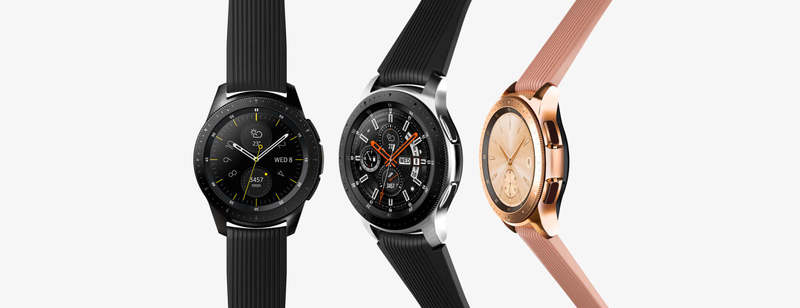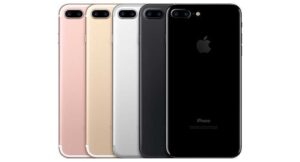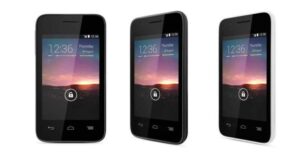It’s taken Samsung a few generations to refine its wearable devices, but with the Samsung Galaxy Watch, it manages to include all the features a modern smartwatch buyer expects, while also ensuring the watch doesn’t need to spend too much time in its charger. It’s also managed to squeeze in a feature no other brand in South Africa offers yet: standalone connectivity.
Online all the time
Available in 42mm and 46mm variants, the Samsung Galaxy Watch also comes in an eSIM iteration. That means if you’re a Vodacom contract customer you can get a virtual SIM for your Samsung Galaxy Watch that enables it to receive calls, messages and notifications even if your smartphone is out of range.
Not only does independent connectivity help you to stay in touch, but it also means you can go for a run or a ride and still enjoy podcasts or stream music from Spotify without having to download them ahead of time. Plus, if you wind up doing 10km instead of the usual five you can send a message to let the family know you’ll be home later than expected.
Twist and shout
Instead of using the Android Wear operating system like many of its rivals do, Samsung’s opted for its own Tizen OS for the Samsung Galaxy Watch. That means Samsung’s latest wearable will work with non-Samsung Android devices and even with Apple’s iPhone (albeit with reduced usefulness), but it’s no surprise that the best integration and functionality comes from pairing it with a Samsung handset.
Tizen is a clean, intuitive and attractive OS, and one of its highlights is its support for the rotating dial around the face of the Samsung Galaxy Watch that is used to navigate the watch’s various menus and settings. In addition to the dial, there are two physical buttons on the side of the watch. The buttons are sufficiently far apart that they’re easy to use even with wet or gloved hands.
Thanks to the Samsung Galaxy Watch’s high-resolution, OLED screen, it’s entirely possible to adjust most settings from the watch itself, but the accompanying Samsung Galaxy Wearable app makes it even easier to download apps and watch faces, and it’s required if you want notifications from your phone to show up on your wrist.
A surprising benefit of receiving notifications on your wrist is that you might find it encourages you to turn off the superfluous ones. At the same time, receiving essential ones often means less time checking your phone, which can be good for not just your productivity but also for your phone’s battery life.

No-sweat sweat sessions
Thanks to built-in heart-rate tracking, GPS and Bluetooth, the Samsung Galaxy Watch is ideal for phone-free exercising … even if you want to track your ticker and your route while also playing your favourite inspirational anthems. Every major exercise is covered by the Samsung Galaxy Watch, along with plenty of less common ones, and you can rearrange the order in which they appear on your watch from the app.
Users are also spoilt for choice when it comes to watch faces. In addition to a healthy selection of free options from Samsung, there’s an immense catalogue of third-party offerings, making it a cinch to see as much (or as little) information you want at a glance.
To bedtime, and beyond
One of the most common gripes about wearables is their battery life, with many of them needing to be charged daily, or every second day at best. The larger Samsung Galaxy Watch can manage around four days with regular use (including daily exercise, as long as your idea of a morning trot isn’t a half marathon), while the smaller one should do three. This means unlike some other high-end, feature-rich smartwatches, you can use the Samsung Galaxy Watch to track your sleep.
Less frequent charging also means you’re less likely to be caught with a flat device, and if your battery does start running low the Samsung Galaxy Watch will prompt you to put it into low-energy mode where it turns the display monochrome and limits connectivity options to keep power consumption to a minimum.
Unfortunately, even though the Samsung Galaxy Watch uses wireless charging it still needs its proprietary charging dock rather than working with any wireless charging pad. But the good news is the dock is the same as the previous generation of Samsung’s smartwatches, so if you’ve already got one, it’ll work perfectly with it.
Play or pay
Pleasingly, Samsung Pay is available with the Samsung Galaxy Watch, but only the tap-to-pay variant, not MST (Magnetic Secure Transmission) like you get on Galaxy-series smartphones, so you’ll only be able to use it on point-of-sale devices that support contactless payments. Still, it’s a great feature to have, especially if you know the coffee shop at the end of your running route has the necessary payment facilities.
Verdict
Overall, the Samsung Galaxy Watch feels like a substantial upgrade from the Samsung Gear S3 (and Frontier) that preceded it. It does almost everything the previous generation did, but there are some new additions (such as improved waterproofing) that make it an even more capable and compelling wearable.
It’s also the best-looking wristable Samsung has released to date and doesn’t look out of place in the boardroom. If you already live in Samsung land and have been wanting a smartwatch, the Samsung Galaxy Watch suggests it might be time to take the plunge.



